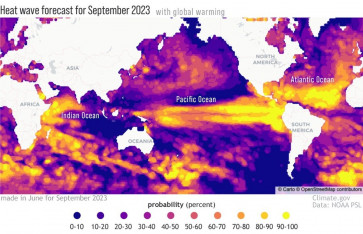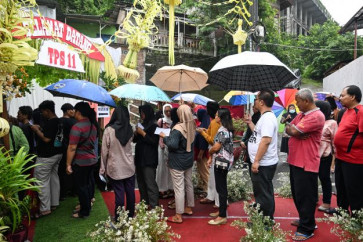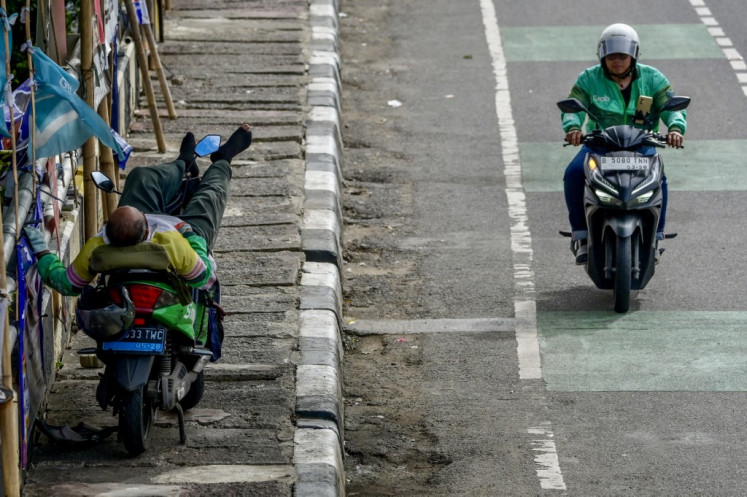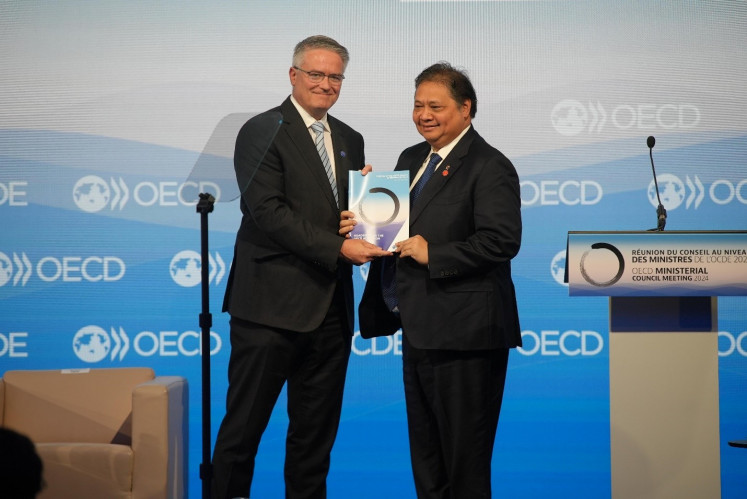University students make Green Maps of N. Jakarta
Despite Jakarta being a coastal city, visiting the beach is not a part of the culture here, as almost every beach in town has an entrance fee
Change Size

D
espite Jakarta being a coastal city, visiting the beach is not a part of the culture here, as almost every beach in town has an entrance fee.
Architecture students from Pelita Harapan University however, found a spot in Muara Angke, North Jakarta that has a rare open beach area.
The spot is on their Green Map of Muara Angke, part of their assignment of mapping sustainable living, natural and culturally significant sites in North Jakarta.
The students mapped the Maritime Museum, compost making plant and a camping site in Ancol, among other interesting places.
Pelita Harapan lecturer and Jakarta Green Map volunteer Elisa Sutanudjaja, assigned the students the task of making the Green Map of Jakarta's coastal area as part of her "Sustainable Development and The Urban Environment" course.
The results of the project, which took one and a half months, were exhibited from Monday to Friday. Six maps, from six groups of students, were displayed next to Green Maps from cities around the world.
Assigning mapmaking to her students was a first for Elisa. She found out about the Jakarta Green Map community last year and decided to join them.
The idea behind a green map is to get communities to find green sites around them and push for a more sustainable city.
"I want students to understand the actual social conditions of the city. They are architecture students and they usually do field surveys, but this one is more thorough because they have to talk to the people," she said.
The students said that after completing the assignment they gained more of an insight in to what the area is like. One of the students told Elisa that if not for the assignment she would never have visited the Maritime Museum.
Elisa said that the areas surveyed included Pantai Indah Kapuk, Muara Angke, Pluit and Pantai Mutiara, Ancol, and the Ancol amusement park complex, as well as Tanjung Priok.
From talking to people, student Steven Rendy, who's group mapped Ancol, said that one thing that he found was that some residents were ignorant of what was in their own neighborhood.
Steven found a garbage separation plant and compost site. The garbage comes from The Puri Marina Ancol housing complex. "I have a friend that lives in Marina putri, she didn't know that there was a compost place there."
The students used Adobe Photoshop and Auto Cad, to design what are visually appealing maps. However, some of the maps lacked information on sustainable development.
The map of Pantai Indah Kapuk, for example, did not detail the area's history of environmental degradation. The area was a mangrove forest, but has been transformed into upscale residential housing.
On the Pluit and Pantai Mutiara map, Mega Mall pluit and the high-rise Regatta apartments were included as places of interest.
In Jakarta, since it was first initiated in 2001, different communities have produced five published maps.









